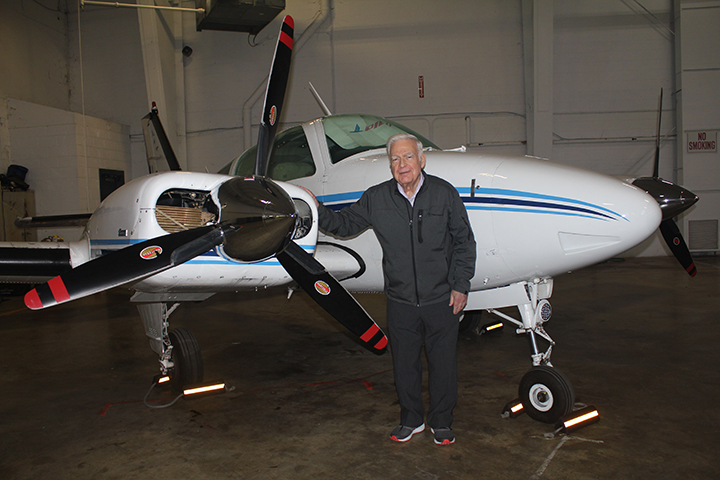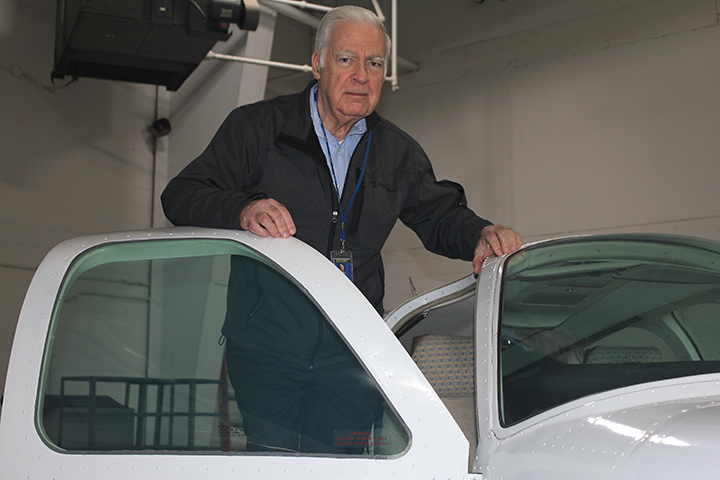
BPT: Mado, what first attracted you to aviation – and why?
MM: I was 7 years old when I took an exciting seaplane ride in a Piper Cub. Soon after that, I built and flew models of many types during my school years. I yearned to fly the real thing and after joining the U. S. Air Force, I was able to do just that. When I left the Air Force, the G.I. Bill sustained my ability to continue flight training and pursue my passion for flying.
BPT: Where did you learn how to fly?
MM: I joined the Aero Club while stationed in Salina, Kansas (north of Wichita) and I soloed in June 1964.
BPT: Tell us about the aircraft you have flown.
MM: I have flown the following aircraft: De Havilland Dash 7 & 8; Beech 90 and 200 King Airs; all Beech Barons and Bonanzas; all Cessna piston singles and twins; Piper Cheyennes, Chieftains, Saratogas, Cherkoees, 140s, 180s and 200s, Tripacers; Cubs; and Aeroncas. Currently, I fly the Beech King Air, as well as Barons and Bonanzas.
BPT: Mado, can you share with us some of the highlights of your flying career?
MM: Highlights in my flying career were placing first in the New England Regional Precision Flying Competition and competing in the nationals; I was fortunate to have the time and the money to earn a Flight Engineer rating in the Boeing 727. IN addition, I trained 10 pilots in a row for a first-time pass on their respective instrument ratings.
Flying for Piedmont Airlines was another highlight in my flying career, as well as creating two Part 135 air charter certificates from the start.
BPT: How did you become involved with BPT?
MM: I first became involved by instructing a BPPP instructor to obtain his multiengine rating in a Baron. He recommended that I become a BPPP instructor in November 1992 in Winston-Salem, NC. Then, when BPT was created, I was asked to train for them.
BPT: Why is BPT important to you?
MM: BPT has by far the most knowledgeable and experienced group of CFIs for Beechcraft – both in the air and ground school. They have a knack of simplifying complex subjects. I am honored and proud to be affiliated with BPT.

BPT: What do you think makes BPT unique?
MM: The uniqueness of bpt is that our CFIs are proficient with new avionics and importantly, how they interact with older equipment. Incompatibility of equipment is addressed and curriculum is constantly updated to include new topics. There is a devotion among CFIs to know as much as they can about Beech aircraft.
BPT: Would you recommend BPT to a new pilot?
MM: Yes! I recommend BPT to any new pilot for a solid foundation of knowledge of their aircraft.
BPT: How about for a seasoned pilot? Would you recommend BPT?
MM: I believe that BPT is invaluable to seasoned pilots, because they can learn tidbits and helpful methods that enhance their safety procedures.
BPT: Is there anything else you would like to add?
MM: Increasingly, I observe that automation is eroding flying skills. Autopilots and black boxes are flying the aircraft instead of the pilot. These devices are a major distraction until thoroughly learned.
I believe one of my functions is to point out the idiosyncrasies of equipment compatibility and be able to answer, “Why is it doing that?”



